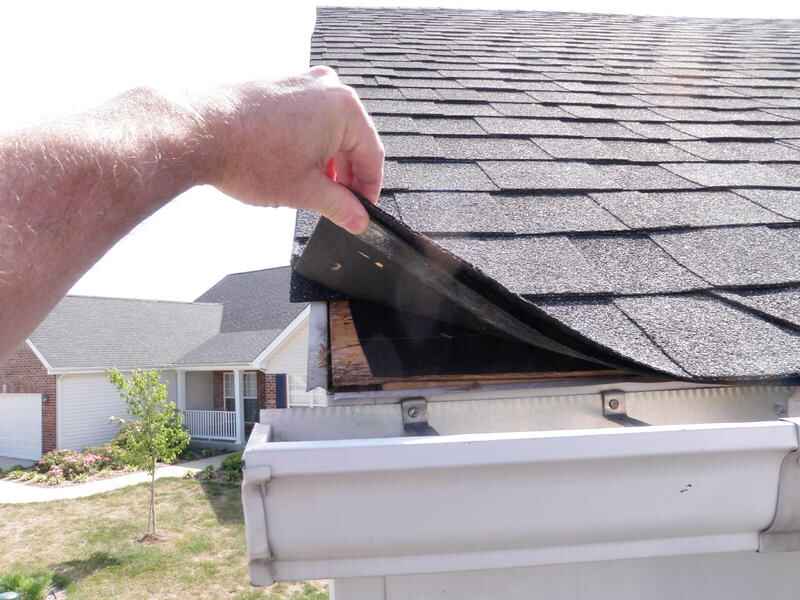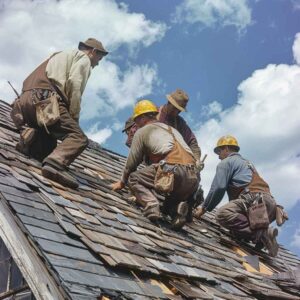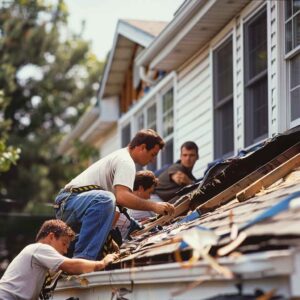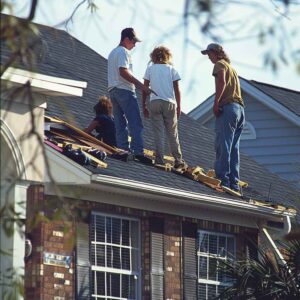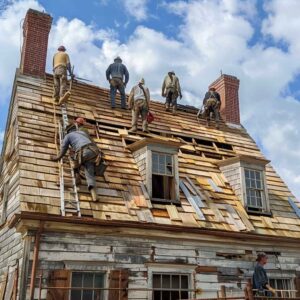Have you ever noticed the subtle overhang on the edge of your roof and wondered what purpose it serves?
A drip edge in roofing may seem minor, but its role is crucial for the protection and longevity of your roof. Understanding its function and significance can save you from water damage and structural issues. When installing or repairing a roof, it’s essential to enlist the expertise of a professional roofer who can ensure that the drip edge is correctly installed and effectively channels water away from the roof and its underlying structure.
So, what exactly does this unassuming component do, and why should you pay attention to it?
Importance of Drip Edge in Roofing
Understanding the importance of drip edges in roofing ensures proper water drainage and protects your home from potential water damage. Without a drip edge, water can seep into the underlying structure of your roof, leading to rot, mold, and even compromising the integrity of your home. By installing a drip edge, you create a barrier that directs water away from the fascia and prevents it from infiltrating your home’s foundation.
Furthermore, the drip edge helps to prevent water from pooling on your roof, which can lead to leaks and eventually cause costly repairs. It protects against water damage, especially during heavy rain or snowfall.
Components of a Drip Edge
To fully grasp the functionality of a drip edge in roofing, it’s essential to understand the key components that make up this crucial element of your roof’s protection. The drip edge consists of three main parts: the fascia, the extended lip, and the metal flashing.
The fascia is the vertical board that runs along the roof’s edge. It provides a smooth and even surface for the drip edge to be attached and helps protect the underlying roof structure from water damage.
Installation Process of Drip Edge
The installation process for a drip edge involves securely fastening the drip edge along the roof’s edge to ensure proper water drainage and protection. First, position the drip edge along the eaves, ensuring it overhangs the edge slightly. Use corrosion-resistant nails or screws to secure the drip edge every 8 to 10 inches, ensuring it remains flush against the edge of the roof.
When installing the drip edge on the gable ends, extend it past the roof deck and secure it in place. At the corners, make precise cuts to ensure a snug fit and proper water runoff. It’s crucial to overlap the drip edge sections to prevent water from seeping through any gaps. Additionally, consider using sealant to provide extra protection against water infiltration.
Benefits of Using a Drip Edge
When considering the installation process of a drip edge, it becomes evident that the benefits of using a drip edge extend beyond just proper water drainage and protection.
A drip edge protects your roof by preventing water from seeping into the underlying structures, reducing the risk of water damage and rot. It also helps in preventing pest infestations that can be attracted to moisture.
Furthermore, a drip edge contributes to the longevity of your roof by directing water away from the fascia, preventing it from deteriorating over time. A drip edge enhances ventilation by maintaining a gap between the roof deck and the fascia board, reducing the likelihood of mold and mildew growth.
Maintaining Your Drip Edge
Regular inspection and cleaning of your drip edge ensure optimal functionality and prolong its lifespan. Inspecting your drip edge at least twice a year can help you catch any issues early on before they escalate. Look for signs of damage, such as rust, dents, or gaps between the edge and the roof.
Cleaning your drip edge is a simple task that can prevent debris buildup, which can lead to water damage and corrosion. Use a brush or a cloth to remove any dirt, leaves, or other debris that may have accumulated on the edge. Additionally, make sure the drip edge is securely attached to the roof to prevent it from coming loose during harsh weather conditions.

